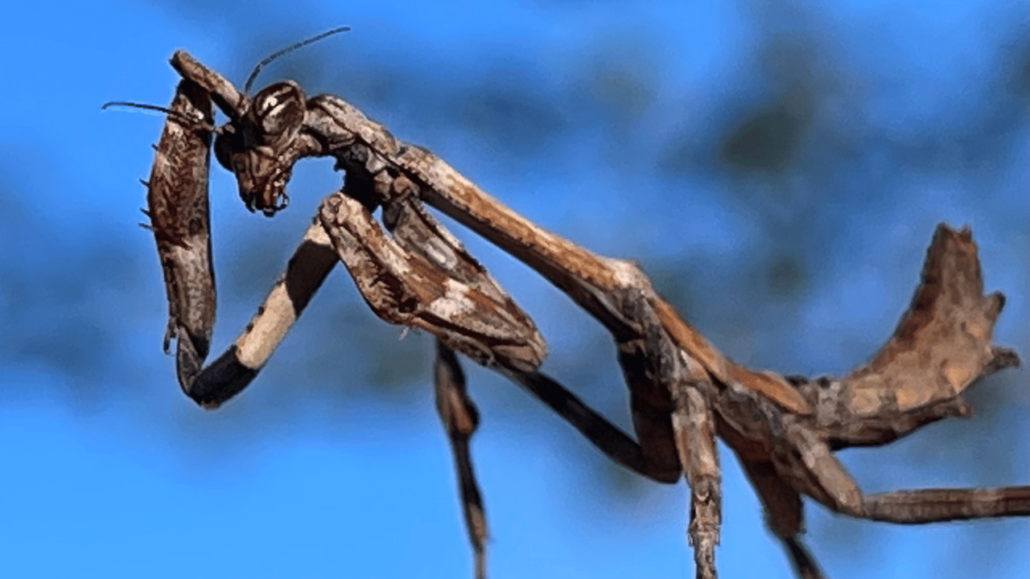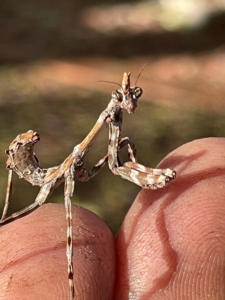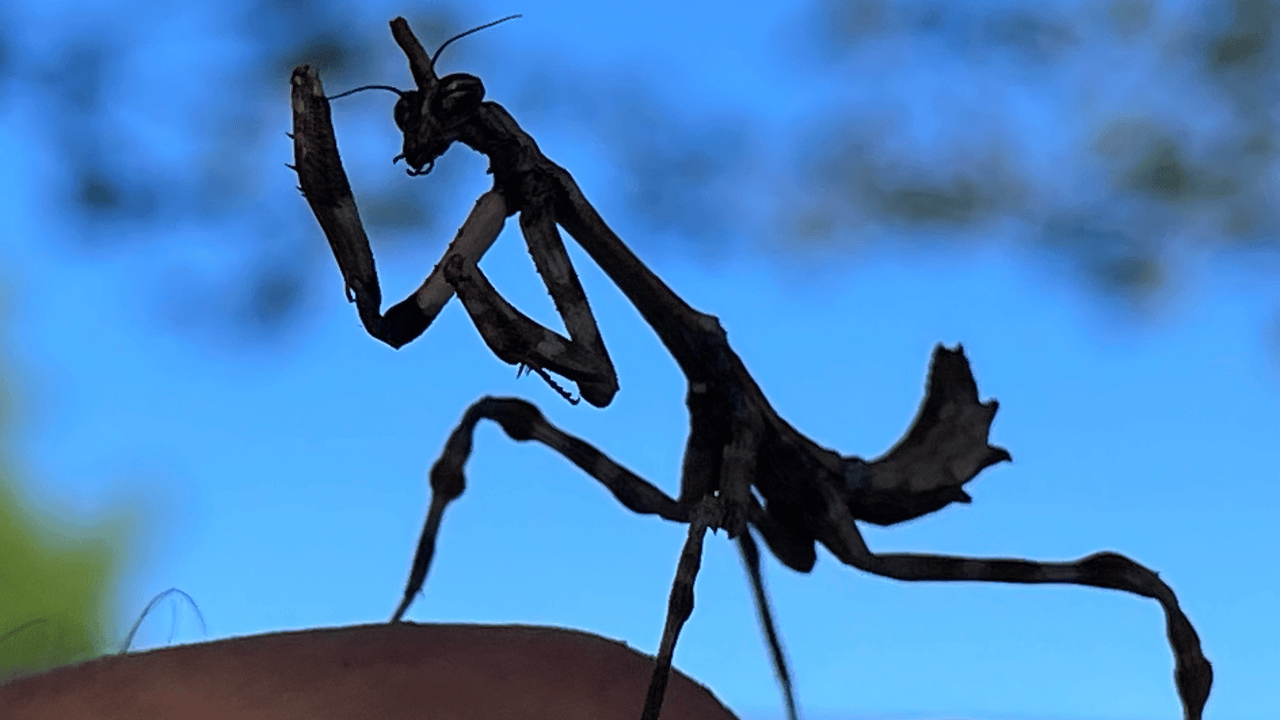Learn
Yes, Virginia, there is such a thing as a unicorn. It’s real and it lives in Arizona. My husband found one in our yard in April, and I have the photos to prove it. We let it go and hope it will reproduce in the wild and make more unicorns.
As you probably have figured out by now, I’m not talking about a mythological horse-like creature with a horn in its forehead that heals sickness and renders poisoned water potable. I wish! Rather, my unicorn was an Arizona Unicorn Mantis, Pseudovates arizonae. It’s called a unicorn mantis because it has a tiny horn-like structure pointing out of the top of its head, in addition to the two antennae on the head of every insect.

My husband found the unicorn mantis on the lawn, while it was hunting. It was a nymph, meaning it had not yet changed into an adult. This wasn’t surprising, as it was spring.
Quick science lesson – some insects like grasshoppers and praying mantises undergo what is called incomplete metamorphosis, in which a nymph hatches from the egg and gradually gets larger until it grows wings, changing into an adult reproductive. This is different from complete metamorphosis, as in butterflies and bees, where the larva is a caterpillar or grub and looks nothing like the adult form. In between the larva and adult form, the insect pupates, completely rearranges its body, and emerges as a winged adult.
Nymph unicorn mantises have no wings, and their abdomen is curled up towards their back. They are pale orange with white mottling (or white with orange mottling). Like all insects, they have six legs, but like all praying mantis, the front two legs are held close to the face and used to capture and hold prey.

The unusual feature of the Unicorn Mantis is the horn-like structure. From photos, it looks like it may be made up of two structures that are held together or even fused. I couldn’t find anything online that answered my questions about the structure and function of this “horn.”
I identified my new friend by uploading a photo to iNaturalist. Once in iNaturalist, I could learn more. I found that Arizona Unicorn Mantises are found in Arizona, of course, but also in Mexico. Most sightings have been in southern Arizona, with a few in the Verde Valley. Arizona Unicorn Mantises have been identified as far south as Nayarit and Jalisco, in Mexico. A couple of Arizona Unicorn Mantises have been found in the southwestern corner of New Mexico.
While these mantises have been photographed in every month, most sightings take place from June through September. In the spring, you find nymphs, whereas later in the year there are photos of adults.
This is about as far as I got until a month after I saw our Arizona Unicorn Mantis. Over the third weekend of May, the Los Angeles County Museum of Natural History fills up with enthusiasts of insects and arachnids (spider cousins) during the annual Bug Fair. It is the biggest weekend of the year for the museum. We are there in our beekeeping booth, with a four-story observation beehive and eight types of honey to sell. We are so busy that I rarely get to see the other vendors except for the ones nearest our booth.
This year, as fate would have it, our next booth neighbor was selling praying mantises. And he had Unicorn Mantises! I was so excited. His were caught in Texas, and so I learned that there is a Texas Unicorn Mantis, Pseudovates chlorophaea. Texas Unicorn Mantises have a much larger distribution, occurring from San Antonio south along the central and eastern side of Mexica, through Central America, to Columbia.
Just like the mythical unicorn, the Arizona Unicorn Mantis is a rare and hard-to-find creature. In the 15 years since iNaturalist began, there have only been 74 Arizona Unicorn Mantises recorded. Compare this to the Texas Unicorn Mantis. With its larger distribution, there have been 442 observations. But that is still small when compared to the Arizona praying mantis, Stagmomantis limbata, which has been recorded 6,823 times since 2008. Is the Arizona Unicorn Mantis declining or growing in numbers? No one seems to know.
I couldn’t resist bringing home a Texas Unicorn Mantis from the Bug Fair. I am keeping it in a cage and won’t be releasing it. I don’t want to risk this Texas species hybridizing with our rare Arizona Unicorns. Every day we feed our Texas Unicorn a diet of honeybees, another non-native insect. It rewards me with, well, not much. Insects are not cuddly pets. But I think it is pretty cool to have a real, live unicorn in my house.






